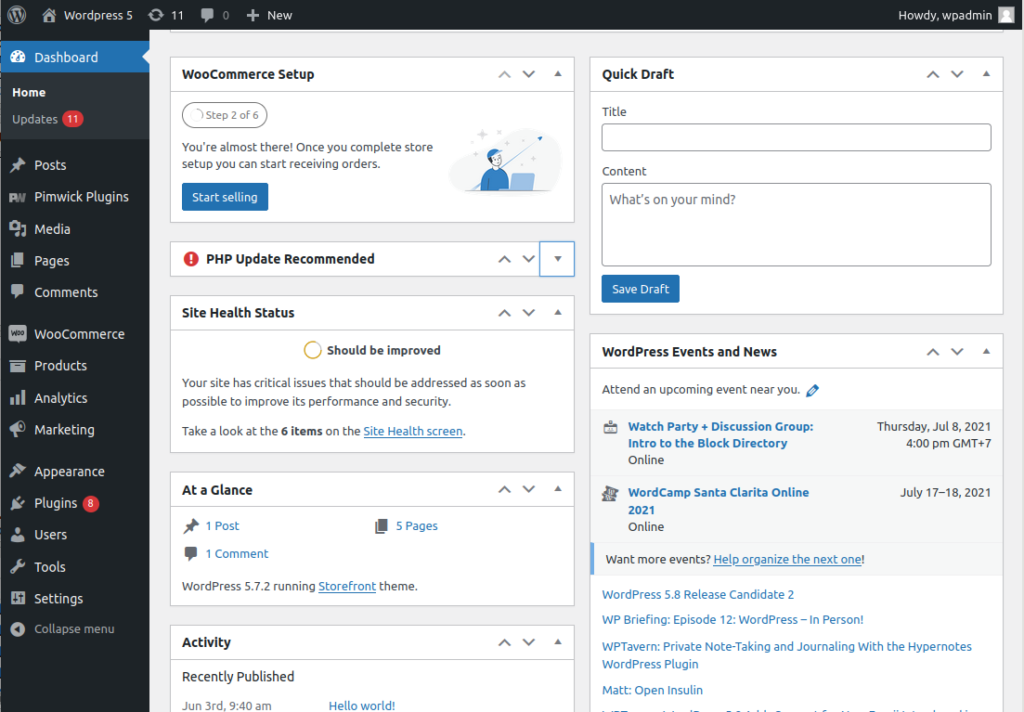WordPress is a well-known website builder that runs over 43% of all sites on the web, so if you’re creating a WordPress blog or website today, you may already know this.
However, it wasn’t at first when it started.
This article will look into WordPress’s history to demonstrate how it has changed over time.
Web Design Toronto Experts say, “WordPress’s development history clearly shows how open source communities may create something beneficial without sacrificing software freedom. The credit for the success of the WordPress project goes to the community of committed developers, users, and supporters.WordPress is cost-free as a result.”
Why was WordPress Created?
WordPress was created because the primary creators of the blogging programme b2/cafelog stopped its development. Mike Little & Matt Mullenweg, who used to rely on b2/cafelog users, decided to create a new alternative platform
They literally had no idea they were going on a path that would ultimately assist millions of people worldwide and provide a thriving business for thousands of programmers, designers, authors, bloggers, and online publishers.
First Release
Matt Mullenweg publicly announced the release of the first ever version of WordPress on May 27, 2003. The public accepted it favorably. It was built with a lot of enhancements over b2 Cafelog. A redesigned admin interface, fresh templates, and automatically produced XHTML 1.1 compatible templates were all included in the initial release of WordPress.
WordPress 3.0
The release of WordPress 3.0 occurred on June 17, 2010. It was considered a significant step for WordPress becoming one of the feature-enriched CMS.
Several new features were included in this edition, including custom post types, improved custom taxonomies, custom headers, menus, contextual assistance on admin pages, etc. The WordPress MU initiative blended into the platform’s core to establish Multisite networks. Additionally, it included the Twenty-Ten theme, which began the custom of having a brand new default theme each year.
WordPress 3.7
The newly designed updates feature that WordPress 3.7 introduced in 2013 allows WordPress to update the software automatically on your site for minor releases. The Google Chrome browser’s automatic updates function is pretty similar to that. We created a guide on how to turn off automatic updates after several people complained about the service. WordPress has already surpassed all other CMSs in popularity by this point.
WordPress 3.8
The latest WordPress admin interface, MP6, was launched with the release of WordPress 3.8 in December 2013. On whatever device or screen size, this new UI was responsive and designed to offer consumers a better user experience.
WordPress 3.9
On April 16, 2014, an ADVANCED Version of WordPress named 3.9 was made available. Its primary concentration was to enhance the visual post editor in WordPress. Images may be dropped into the post editor by dragging them there. Now, users can browse their gallery previews and modify photographs directly inside the editor. WordPress 3.9 added audio playlists and live widget previews, among other improvements. With the succeeding Wp 4.0 and Wp 4.1 releases, the WordPress core underwent more yearly improvements. Additionally, non-English downloads of WordPress overtook English downloads for the first time in 2014 as well.
WordPress 4.2, 4.3 & 4.4
Wp 4.2, 4.3, & 4.4 were all launched in 2015. These updates concentrated on emoji support, better localization, a theme customizer, and setting out the groundwork for the Wp REST API.
WordPress 4.5, 4.6 & 4.7
Wp 4.5, 4.6, and 4.7 all were launched in 2016. Tons of New features, modification & enhancements were included in every edition. The most significant advancements were the simplified upgrades for themes and plugins, content recovery utilizing browser storage, and the addition of a custom CSS capability for theme customizers. By year’s end, WordPress.org reported that it was actively supporting HTTPs.
WordPress 4.8 & 4.9
2017 witnesses the release of WP 4.8 & 4.9. With these updates, new standard widgets for adding audio, video, photos, galleries, rich content, and HTML were added. These updates also prepared the way for the brand-new block editor for WordPress.
WordPress 5.0
WordPress 5.0, which introduced a brand-new editing interface, was launched in 2018. The project name for ‘new block editor’ for WordPress was Gutenberg.
WordPress 5.1 & 5.2
WordPress began integrating the Site Health initiative into its core in 2019.
Site Health began notifying users when an outdated PHP version is found with Wp 5.1 and 5.2.

